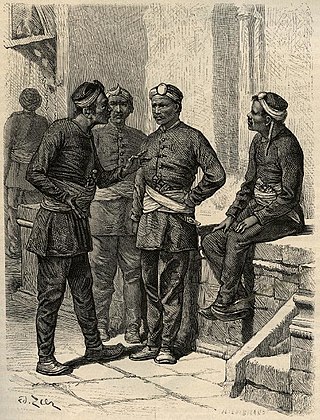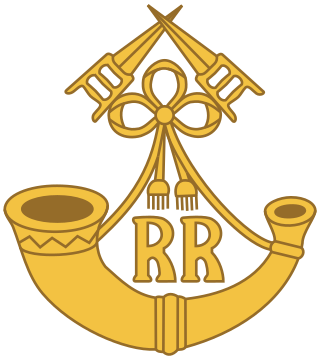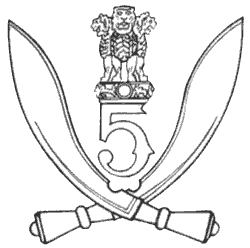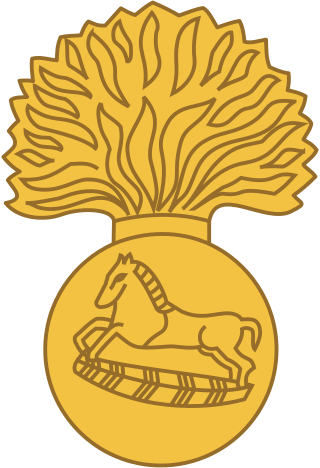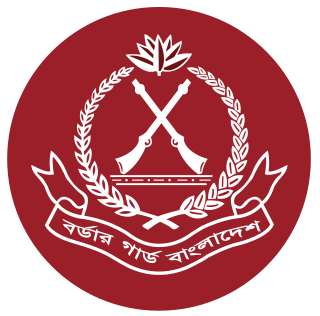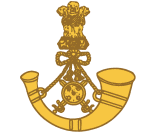Past and present
On 1 February 1910, the Silchar and Garo Hills Battalions were amalgamated with Dacca Battalion. Subsequently, in the same year, a detachment of 100 men was raised at Barisal and a full-fledged battalion with the strength of one Commandant, 4 Assistant Commandants, 8 Subedars, 8 Jamadars, 66 Havildars, and 664 Sepoys and Buglers was created at Dacca Headquarters, with detachments at Tura, Silchar and Barisal. In 1911, the battalion participated for the first time in military operations in the Mishmi Mission. In November 1911, a battalion school headquarters with a staff of a single full-time teacher was sanctioned and started functioning. Owing to the repartition of Eastern Bengal and Assam, consequent upon the Delhi Darbar announcement in 1912, many changes took place in the battalion. The Silchar and Garo Hills detachment were transferred to the Assam Government with effect from 1 November of the same year. As a result, the battalion was decreased and it became First Bengal Military Police Battalion. The composition of the force then consisted of 1 Commandant, 2 Assistant Commandants, 1 Subedar Major, 3 Subedars, 4 Jamadars, 39 Havildars and 664 Sepoys and Buglers.
In early 1912, this battalion received the commendation of the local government for the excellent and arduous duties performed in guarding extremist prisoners. The Mishmi mission detachment returned at the end of February 1912, again with a commendation from His Majesty's Imperial Government for their excellent work. In January of the same year, the Viceroy Lord Hardinge complimented the battalion and mounted escort for their smartness and remarked on the quality of the playing band. Mr. Hughes Buller, Inspector-General of Police, also put a complimentary notice in the "Police Gazette". Later that year, Guards of Honour were presented by the Battalion to the Governor of Bengal, Lord Carmichael. The battalion was also inspected by him on 16 July, who made the following remark: "I was much struck by their smart and soldiery appearance. They were physically cleaned and well turned out and looked a well drilled lot of men."
In January 1913, on the orders of the Bengal Inspector-General of Police, a detachment of the battalion was sent to Naga Hills on an expedition. In the advance on Chenglong on 5 February the baggage guard was attacked. As a result, three sepoys of the Battalion were killed and three others seriously injured. Congratulatory messages were received from Lord Carmichael and Mr. Hughes Buller regarding the part the battalion had played in the fighting during the capture of Chenglong. Major-General E.S. May wrote to the Inspector-General of Police with regard to the work of the battalion during the Dacca concentration:
- "The Battalion took part with the regular troops on all the combined field days. They marched well and were active and keen and their energy did not flag at the end of any of our long days in the field. Their training seemed to me to be good and efficient and carried out on the right lines. Under all circumstances the conduct of the men was excellent and they acquitted themselves in a disciplined soldier like manner. Service in the Lushai Expedition in 1888-1889 and in several minor expeditions since that date and now you have remained on the beyond the usual term, because your help was needed. Your superior officers speak in the highest terms of the work you have done during the changes which took place recently in the Dacca Military Police Battalion and your services were invaluable in raising the now coys. In 1914. You have the past received Honors, you were chosen to go to Darbar at Delhi in 1903 and again in 1911. The title of Sardar Bahadur has conferred on you and now, as I have said, it gives me great pleasure to."
Two detachment camps were set up at Buxadar and Hoogly in 1914 with two new companies commissioned by the Secretary of the State for India. The Battalion force was detailed for Law and Order duty in connection with the Komaghata Maru Sikhs Riots at Howrah and did excellent work in rounding up the rioters, and earning the thanks of the Governments of Punjab and Bengal.
At the Police parade held at Dacca on 8 August, Subedar Major Gopal Chandra, Sardar Bahadur, was decorated with the insignia of the Order of the British India, 1st class, by Lord Ronald Shay, Governor of Bengal, who in decorating him made the following remarks:
- "It gives me great pleasure to decorate you with the Insignia of the Order of British India. 1st Class. In your case the service has extended over a period of nearly 40 years and for over 30 years out of the long term you have held the King's Commission, you have seen active decorate you with the Insignia of the Order of British India."
A report of the Police Administration in the Bengal Presidency stated:
- "Good accounts have been received of the contingent serving with the Mesopotamia Expedition force where a Lance Naik Poli Ram has recently had been awarded the I.O.M. The Bengal Military Police furnished reinforcements for the regular Army at that time of National emergency. The officer and men so lent to the Army have been conspicuous for their soldierly gallant conduct in the field and their behaviour while serving in the regular army troops in the field has left nothing to be desired."
The Bengal Military Police won its present name "Eastern Frontier Rifles" from the Government of India in 1920, in appreciation for war services rendered. The Eastern Frontier Rifles (Bengal Battalion) Act was passed the same year and the Eastern Frontier Rifles (Bengal Battalion) Regulations issued in 1922. In 1921 the Battalion was recognized on the Platoon System, while in 1923 it was given web equipment. Notably, some detachments proceeded to Chittagaon in 1930 as a result of the Armory Raid. On 22 April they engaged the Raiders;12 persons were killed and 29 police muskets and 2000 rounds of ammunition and many empty cases were recovered. Four of them were killed and two captured while six revolvers were recovered. The District Magistrate, Mymensingh, wrote to the Government of Bengal, saying that: "Eastern Frontier Rifles have been invaluable as usual. The mere fact of their presence is a valuable asset to District Authorities."
In 1937, the approved strength of the battalion was 1 Commandant, 3 Assistant Commandants, 8 Subedars, 8 Jamadars, 70 Havildars, and 753 other ranks. In 1938, a detachment of one platoon proceeded to Rampore state in Orissa on special duty. The battalion continued to impress the authorities with their services in controlling communal riots, suppressing violent hostiles and extremists, guarding dangerous prisoners in peacetime, and fighting shoulder to shoulder with the Indian Army during the wars. The battalion also became renowned for its impressive ceremonial parades and was given the privilege of furnishing guards of honour, house guards and escorts to Viceroys and other dignitaries. In December 1941, a St. Johns Ambulance Division was formed in the battalion for the first time. This battalion was shifted from Dacca to Hijli on 1 September 1947. On 14 July 1951 it was relocated from Hijli to Salua in the district of Midnapur where the Eastern Frontier Rifles are stationed to date.
Post-independence, the Eastern Frontier Rifles continued with their tradition of loyalty, sincerity and gallantry, effectively participating in various operations. They were deployed whenever serious communal riots broke out and when the Civil Police found itself unable to suppress violent elements defying the authority of the state and endangering lives and property. Before 1956 the duties performed by the Eastern Frontier Rifles Battalion were in connection with the communal troubles and border skirmishes within the state of West Bengal. In 1956 the Battalion was deputed to Manipur and the Naga Hills for suppression of the Naga insurgency. The government was reluctant to deploy the Army for various reason at the initial stages; on the other hand, they wanted a strong police action in the area. Eventually the Eastern Frontier Rifles was attached to the 11th Indian Army, when the Army moved in. The force performed their duties with commendable courage, devotion and fortitude under very difficult circumstances. The EFR suffered 4 casualties, and when in 1961 the Indian Army moved in, they were withdrawn.
Beside their deployment to the Naga Hills, the Eastern Frontier Rifles had performed as border security duties as well. Most of the border with East Pakistan (now Bangladesh) was unmanned and therefore porous. Border rules and regulations were also constantly under review and thus there were occasional boundary skirmishes. In 1950, in Dhatupara in Nadia District, there was encounter with the Pakistan Force. The exchange of fire continued for about a week, with casualties on both sides. EFR lost 1 Naik and 1 rifleman. With the taking over of the border by the Border Security Force, the Eastern Frontier Rifles was withdrawn from the Indo-Pak Border. In 1962, when India's border skirmishes with China developed into a war, the question of internal security came to the fore and once again attention went towards the Eastern Frontier Rifles and the 2nd Battalion, which is also stationed in Salua, was deployed to keep the peace in the state. In June 1982, the services of four companies of EFR battalions were placed at the disposal of the Bihar Government to remain as a Reserve Force during the General Assembly Election of Bihar.

